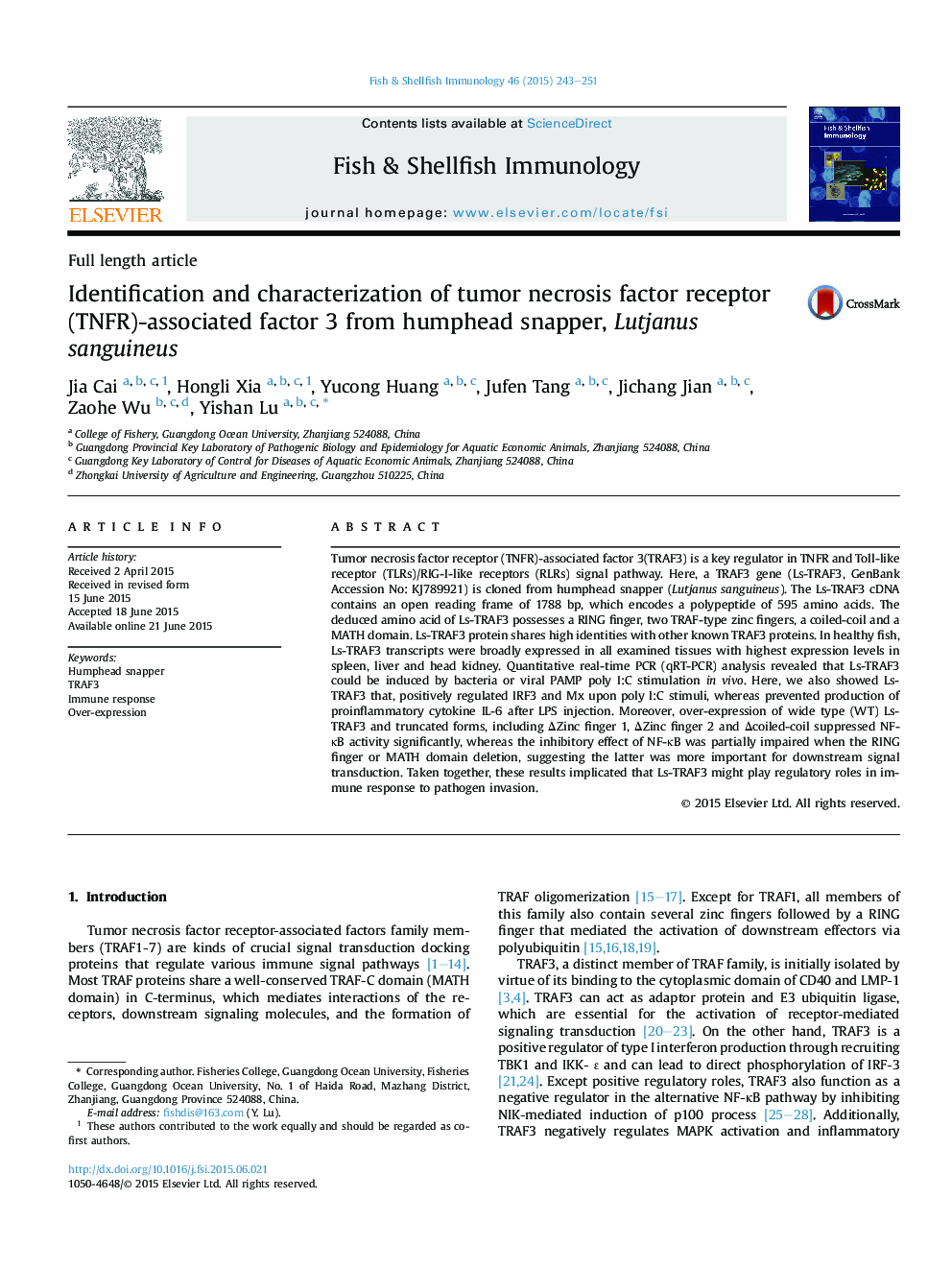| Article ID | Journal | Published Year | Pages | File Type |
|---|---|---|---|---|
| 2431152 | Fish & Shellfish Immunology | 2015 | 9 Pages |
•Full-length TRAF3 was cloned from humphead snapper, Lutjanus sanguineus.•Ls-TRAF3 was broadly expressed in all examined tissues.•Ls-TRAF3 was up-regulated in head kidney after bacteria and poly I:C stimulated.•Over-expression of Ls-TRAF3 suppressed NF-κB activity significantly.
Tumor necrosis factor receptor (TNFR)-associated factor 3(TRAF3) is a key regulator in TNFR and Toll-like receptor (TLRs)/RIG-I-like receptors (RLRs) signal pathway. Here, a TRAF3 gene (Ls-TRAF3, GenBank Accession No: KJ789921) is cloned from humphead snapper (Lutjanus sanguineus). The Ls-TRAF3 cDNA contains an open reading frame of 1788 bp, which encodes a polypeptide of 595 amino acids. The deduced amino acid of Ls-TRAF3 possesses a RING finger, two TRAF-type zinc fingers, a coiled-coil and a MATH domain. Ls-TRAF3 protein shares high identities with other known TRAF3 proteins. In healthy fish, Ls-TRAF3 transcripts were broadly expressed in all examined tissues with highest expression levels in spleen, liver and head kidney. Quantitative real-time PCR (qRT-PCR) analysis revealed that Ls-TRAF3 could be induced by bacteria or viral PAMP poly I:C stimulation in vivo. Here, we also showed Ls-TRAF3 that, positively regulated IRF3 and Mx upon poly I:C stimuli, whereas prevented production of proinflammatory cytokine IL-6 after LPS injection. Moreover, over-expression of wide type (WT) Ls-TRAF3 and truncated forms, including ΔZinc finger 1, ΔZinc finger 2 and Δcoiled-coil suppressed NF-κB activity significantly, whereas the inhibitory effect of NF-κB was partially impaired when the RING finger or MATH domain deletion, suggesting the latter was more important for downstream signal transduction. Taken together, these results implicated that Ls-TRAF3 might play regulatory roles in immune response to pathogen invasion.
